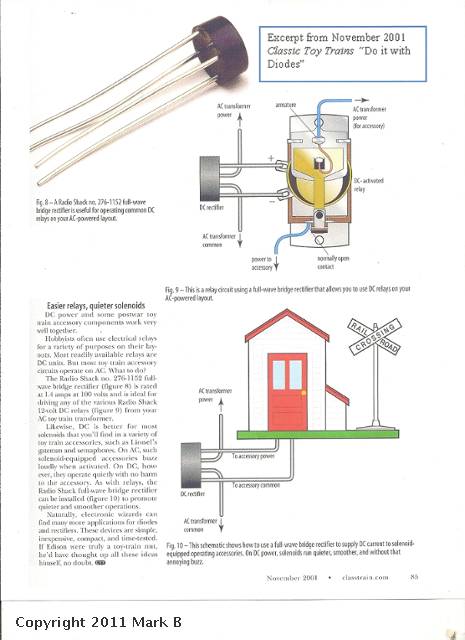Here is a fun project that I need help on....pictures would be great!! I'm about to install the Williams Reverse Board and True Blast Horn to one of my Lionel 2333 F3's. I'm looking for info on where & how to mount the reverse board on the A Unit. Look's like best area is over battery holder; Williams give you a metal 'L' bracket....attaching to the old e-unit screw mount looks like it my come loose so I'm thinking of drilling a small hole through the battery bottom that looks like a fuel tank from outside.
Also have Williams True Blast II Horn that will go in a B unit that I bpurchased on ebay that has a speaker grill where battery door would be.
Mark Brown
Original Post












